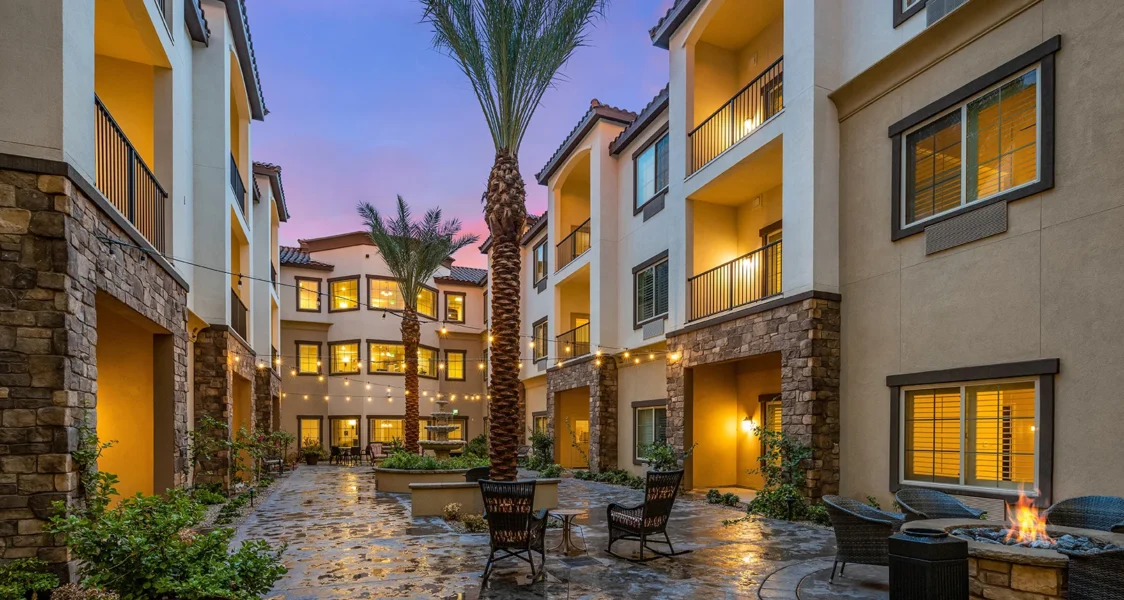The Future of Senior Living: Innovations and Trends
Step into the next generation of senior living: our in-depth look at the evolving industry reveals how technological advancements and luxurious amenities are setting new standards for quality of lifestyle and care. Read on to find out what this means for you or your loved ones.

The senior living industry is experiencing significant growth as it adapts to the needs of an aging population. As more baby boomers reach retirement age, there is a noticeable increase in demand for living options that not only offer comfort but also embrace modern technology and personalized senior care services. These shifts are driven by advances in healthcare and digital technologies that enhance daily operations and improve the quality of life for residents. With smart home features and data analytics becoming more common, today’s senior living communities are better equipped to meet the diverse needs and expectations of their residents. Let’s explore how the best senior living providers are embracing the future with a commitment to providing supportive, vibrant living environments for the growing number of older adults.
Why Is the Senior Living Industry Growing?
The senior care industry is on the rise, fueled by an aging population and a greater focus on specialized senior care. Current growth trends show a steady increase in demand for senior living communities, with more people recognizing the benefits they offer. Occupancy rates are climbing and are projected to return to pre-pandemic levels this year. This rebound is largely due to improved health protocols and a renewed interest in community living environments that provide safety, social engagement, and specialized care. As families and seniors become more aware of these benefits, the demand for spaces in senior living communities will continue to grow, reflecting confidence in providers’ ability to offer a secure, enriching lifestyle.
What is the Future of Elderly Care?
The future of elderly care is being reshaped by two major senior living industry trends: technological innovations and shifts in care models. New technologies are not only enhancing daily operations in senior living communities but are also improving the quality of life for residents. For example, wearable devices monitor health metrics in real time, allowing staff to respond quickly to changes in a resident’s condition. Additionally, smart home features in living units enable residents to maintain their independence safely.
Simultaneously, we’re seeing a rise in luxury and niche senior living services. Communities are now offering more than just basic care; they provide a range of specialized services tailored to the interests and lifestyles of their residents. From onsite spas and wellness centers to cultural and educational programs, these services cater to a diverse and discerning clientele, aiming to enrich the lives of all residents.
In the world of senior living, luxury now goes beyond fine dining and plush settings. Today’s luxury communities offer tailored experiences and services that cater to the personal tastes and wellness needs of each resident, setting new standards in comfort and care.
What is the Most Common Form of Senior Living?
Independent living, assisted living, and memory care are the most popular senior housing options today. Each serves a unique purpose: independent living supports seniors who manage well on their own but enjoy community and fewer home burdens; assisted living provides more personal care and support for daily activities; and memory care offers specialized attention for those with dementia or other cognitive challenges.
Recently, senior living has seen innovative formats like co-housing and intergenerational living gain traction. Co-housing allows seniors to live independently yet share common spaces for daily interaction, promoting a sense of community and support. Intergenerational living, where seniors live alongside younger people or families, fosters social interaction and mutual support across different age groups, enhancing the living experience for all residents. These new senior living trends reflect a shift towards more diverse and socially enriching living environments for seniors.
How Long Do Most People Live in Senior Living Communities?
The duration that residents live in senior living communities varies widely and depends on several factors. Typically, the type of community—whether it’s independent living, assisted living, memory care, or a nursing home—greatly influences how long residents stay. For instance, those in independent living often stay longer, enjoying years of relatively active and autonomous living. In contrast, residents in memory care or assisted living might have shorter stays due to more immediate health care needs. Life expectancy, overall health at admission, and the level of long term care required also play critical roles in determining the length of stay. These factors combined give families a clearer expectation of the time their loved ones will spend in a community.
Future Trends in Senior Care
The senior living sector is swiftly embracing advanced technologies and a greater focus on community-based settings. These changes aim to elevate the living standards for seniors, simplifying daily activities and enhancing the responsiveness of care in both community and home care settings.
Technological Integration and Data Management
Modern communities are transforming through data analytics and artificial intelligence, which refine operational management and resident care. These technologies allow for the monitoring of health metrics and data-driven adjustments to care plans in real time, enhancing both safety and personalization.
Economic and Market Influences on Senior Living Trends
Economic factors heavily influence the development of senior living communities. With rising real estate costs, the industry is moving towards financially sustainable models like shared housing. These approaches are not only cost-effective but also promote a strong sense of community among residents.
The Rise of Luxury and Specialized Senior Living Options
There is a growing demand for luxury senior living options that offer premium amenities. These communities provide high-end living experiences, including gourmet dining and extensive arts and cultural programs, appealing to seniors seeking a luxurious lifestyle in their later years.
Design and Construction Trends in Senior Living
Senior living communities are rapidly adapting to meet the expectations of today’s consumers. Innovations in design and construction focus on creating comfortable and accessible spaces for residents. Wide doorways, no-step entries, and well-lit environments are becoming standard features. These design elements not only improve ease of mobility but also help residents feel more at home in their living spaces.
At the same time, sustainability is taking center stage in construction decisions. More communities are integrating eco-friendly materials and energy-efficient systems. Solar panels, energy-saving LED lighting, and water-efficient landscapes are some examples of how communities are reducing their environmental impact. The shift to sustainable building and design not only conserves resources but also aligns with the values of environmentally conscious residents, making these communities attractive to a broader audience.
Preparing for the Future Senior Living Consumer
Baby boomers are reshaping senior living expectations with their active lifestyles and technology use. As this influential group begins to explore senior living options, communities are actively adapting to meet their specific desires. This includes incorporating advanced technologies that enable better health monitoring and more engaging community interaction. Senior living communities are also designing spaces that support more active lifestyles, with amenities like fitness centers, walking trails, and spaces for technology classes. Additionally, they are enhancing their service offerings to include more diverse dining options, lifelong learning programs, and opportunities for community involvement. These changes are all part of a broader effort to attract a generation that values independence and a rich, engaging lifestyle.
Closing Thoughts
In this article, we’ve seen how senior living is adapting to meet increasing demands with innovative care and enhanced living environments. Communities are integrating advanced technology to offer personalized care and improve operations. The trend toward luxury living continues to grow, prioritizing upscale amenities and services that cater to residents’ desires for comfort and elegance. Economic factors and regulatory changes remain influential in pushing communities to stay flexible and proactive.
Looking forward, the senior living industry will keep evolving to address the diverse needs of an aging population. As baby boomers begin to explore their options, communities will need to align with their expectations for technology and active lifestyles. Koelsch Communities remains committed to leading in these advancements, ensuring that we continue to meet the high standards our residents and their family members expect.
About Koelsch Communities
If you or your family are considering senior living options, you will find a trusted partner in Koelsch Communities. With over six decades of experience, Koelsch has built a reputation for excellence in providing top-tier senior living communities across the nation. Our commitment to respect, dignity, and personalized care ensures that each resident enjoys a fulfilling and comfortable lifestyle. We pride ourselves on consistently high levels of resident satisfaction, thanks to our dedicated staff and robust community programs. Discover more about how Koelsch Communities can serve your family here.









